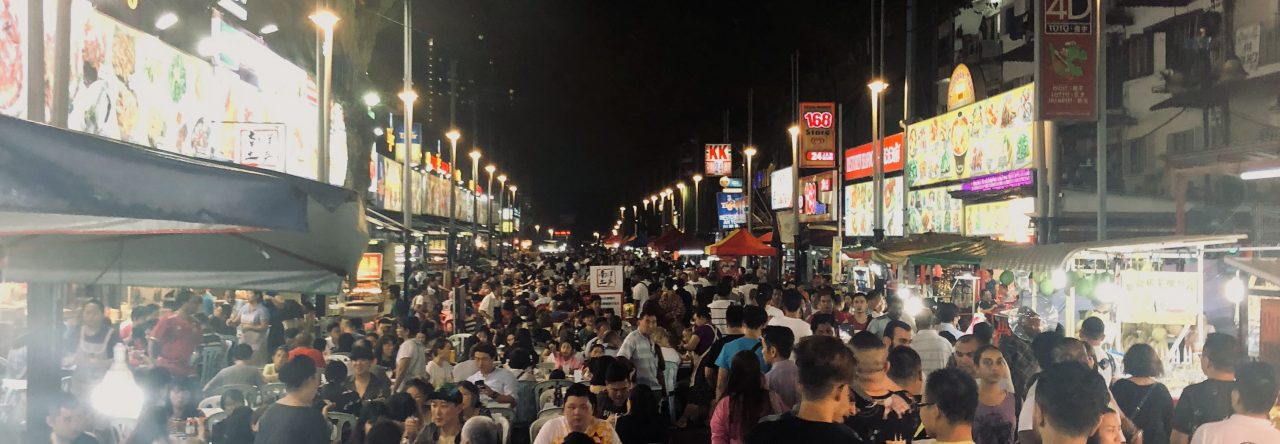Malaysians love to shop. And they love store cards and loyalty schemes. These bring all-important discounts, coupons and rebates and the like. But more importantly, they give you status, and that matters more than anything else on the entire planet. In fact, pretty much your entire social and personal self-worth is encapsulated in those little plastic cards.
Most Malaysians, at least in Kuala Lumpur, have big wallets. Very big wallets. The type that the rest of us would probably consider only as an occasional-use travel folio, when we need more space for our passport, travel documents, cash or traveller’s cheques and so on. Not here. Big wallets are standard. Big, book-sized wallets. And we’re not talking about an average paperback.
It’s not so much that they need a large wallet to carry around a lot of cash and myriad credit cards – although they do that too – but rather because the average shopping trip will require instant access to at least four or five store cards, not to mention the other seven or eight that must be carried ‘just in case’. And then some.
Every major store, supermarket, coffee chain or restaurant will have its own loyalty card. To name a few: Aeon, B Infinite, BHPetrol, BonusLink, Coffee Bean, Genting Rewards, IKEA, Isetan, Juice Works, Kim Gary, Metrojaya, Parkson, Petron, Petronas, Pinch of Salt, Robinsons, Senheng, SOGO, Sunway, Sushi King, Tesco (yes, Tesco Clubcard is in Malaysia), Uniqlo, Watsons… and of course Starbucks. Starbucks is notable because they regularly bring out new card designs, and for any self-respecting Malaysian coffee drinker, it’s very important to own all of them. And keep them all in your wallet. Even though you’re only going to use one of them at a time.
You’ll also want to carry your Touch’n’Go payment card, of which you may have several varieties, used for public transport and toll roads, and accepted as payment in some stores.
Then there’s your airline frequent flyer and hotel loyalty programme membership cards. Obviously you’re not likely to be using them on a typical shopping trip (although some have negotiated shopping perks for their members, and of course it’s not impossible that a shopping trip can occasionally lead to an overnight hotel stay, or even to a flight if it turns out that pair of shoes you wanted is actually a teeny bit cheaper in a whole other country), but it’s important that people see them whenever you open your wallet, to make sure they know just how IMPORTANT you are, so you must carry them at all times.
You’ll of course also want some extra space for practical things like your medical insurance card, driving licence and/or ID card, and RFID access keys for your condo, office, car park and/or gym. And you’ll need somewhere to put your car key. Or keys. If you’re particularly wealthy, you’ve probably got several cars dotted around town, some of which you may have forgotten where you parked. Or even that you own.
You’ll need to learn how to do all your shopping one-handed, since your other hand will be permanently occupied holding on to your mahoosive wallet. And holding on tightly due to an abundance of paranoia, I mean caution, about moped-based snatch thefts, because having your wallet stolen and losing all your loyalty cards would be quite literally the end of everything.
On the plus side, you could use your wallet to save yourself some time at the gym later by doing bicep curls with it while you shop.
Then there’s GrabPay, the one scheme that is purely app-based and doesn’t have a physical plastic card (so you’ll need your phone – but you’re probably carrying at least two phones with you anyway).
GrabPay is rapidly taking over the world, or at least the digitally-enlightened of Southeast Asia. Having started out as a cashless way of paying for taxi rides (Grab began life as a ride-hailing operation), GrabPay is now accepted by myriad stores and other businesses, and can be used to pay for restaurant meals, takeaway food, mobile phone top-ups, bills, and money transfers between friends and family (handy for that all-important conundrum of how the restaurant bill should be divided up) – and probably much much more by the time you’re reading this. It is incredibly convenient. And best of all, it has (for now) a very generous rewards scheme – which is a sure-fire way to get Malaysians on board.
I don’t know what Grab’s actual business plan and long-term strategy are. But I wouldn’t be surprised if they have more to do with financial services and payment aggregation than transport and logistics…
Now if only they could integrate all those store cards into their app…

Leave a reply